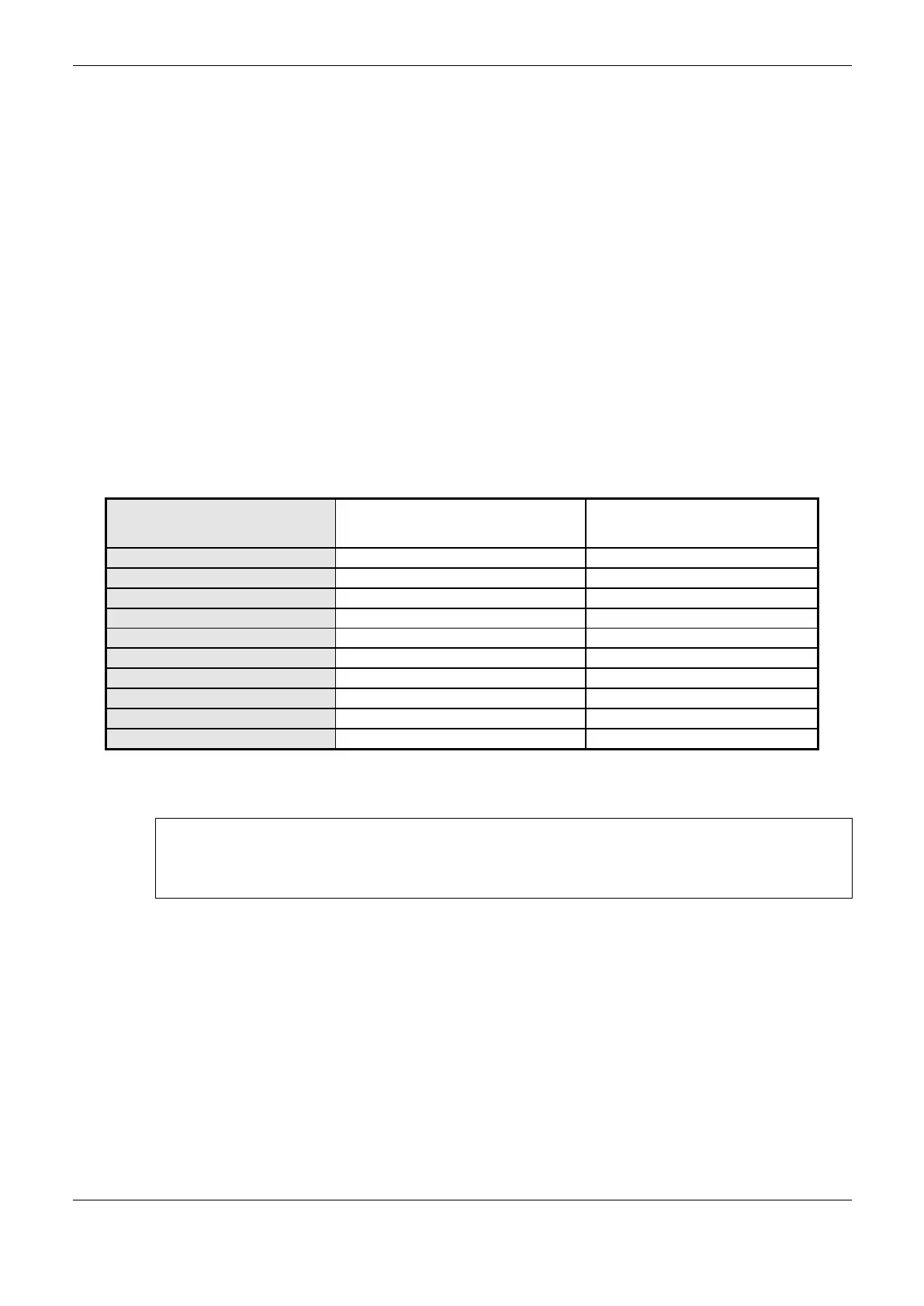4. Configuration
174
For the master and client devices the operating principle is exactly the same, but taking into account
the polling time of the MODBUS relation and not the cycle time of the MODBUS task. For these
cases, the worst performance of a relationship will be performed after the polling time, along with the
user application Execution Time.
It is important to stress that the running MODBUS devices number also changes its performance. In a
user application with Execution Time of 60 ms and interval of 100 ms, there are 40 ms left for the
CPU to perform all tasks of lower priority. Therefore, a CPU with only one MODBUS Ethernet
Server will have a higher performance than a CPU that uses four of these devices.
CPU’s Local Interfaces
For a device MODBUS Ethernet Server, we can assert that the device is capable to answer an x
number of requisitions per second. Or, in other words, the Server is able to transfer n bytes per
second, depending on the size of each requisition. As smaller is the cycle time of the MODBUS
Server task, higher is the impact of the number of connections in his answer rate. However, for cycle
times smaller than 20 ms this impact is not linear and the Table 4-111 must be viewed for
information.
The Table 4-111 exemplifies the number of requisitions that a MODBUS Server inserted in a local
Ethernet interface is capable to answer, according to the cycle time configured for the MODBUS task
and the number of active connections:
Number of Active Connections
Answered requisitions per second
with the MODBUS task cycle at 5 ms
Answered requisitions per second
with the MODBUS task cycle at 20
ms
Table 4-111. Communication Rate of an MODBUS Server at Local Interface
ATTENTION:
The communication performances mentioned in this chapter are just examples, using a CPU with
only one device MODBUS TCP Server, with no logic to be executed inside the application that
could delay the communication. Therefore, these performances must be taken as the maximum rates.
For cycle times equal or greater than 20 ms, the increase of the answer rate is linear, and may be
calculated using an equation:
N =- C x (Z – (Z / (T x 1000)))
Z = 1 / T
Where N is the medium number of answers per second, C is the number of active connections and T
is equal to the cycle time of the MODBUS task (in seconds).
As an example a MODBUS Server, with only one active connection and a cycle time of 50 ms we
get:
C = 1; T = 0.05 s; Z = 1 / 0.05 = 20;
N = 1 x (20 – (20 / (0.05 x 1000))) = 1 x (20 – ( 20 / 50)) = 1 x (20 – 0.4) = 1 x 19.6

